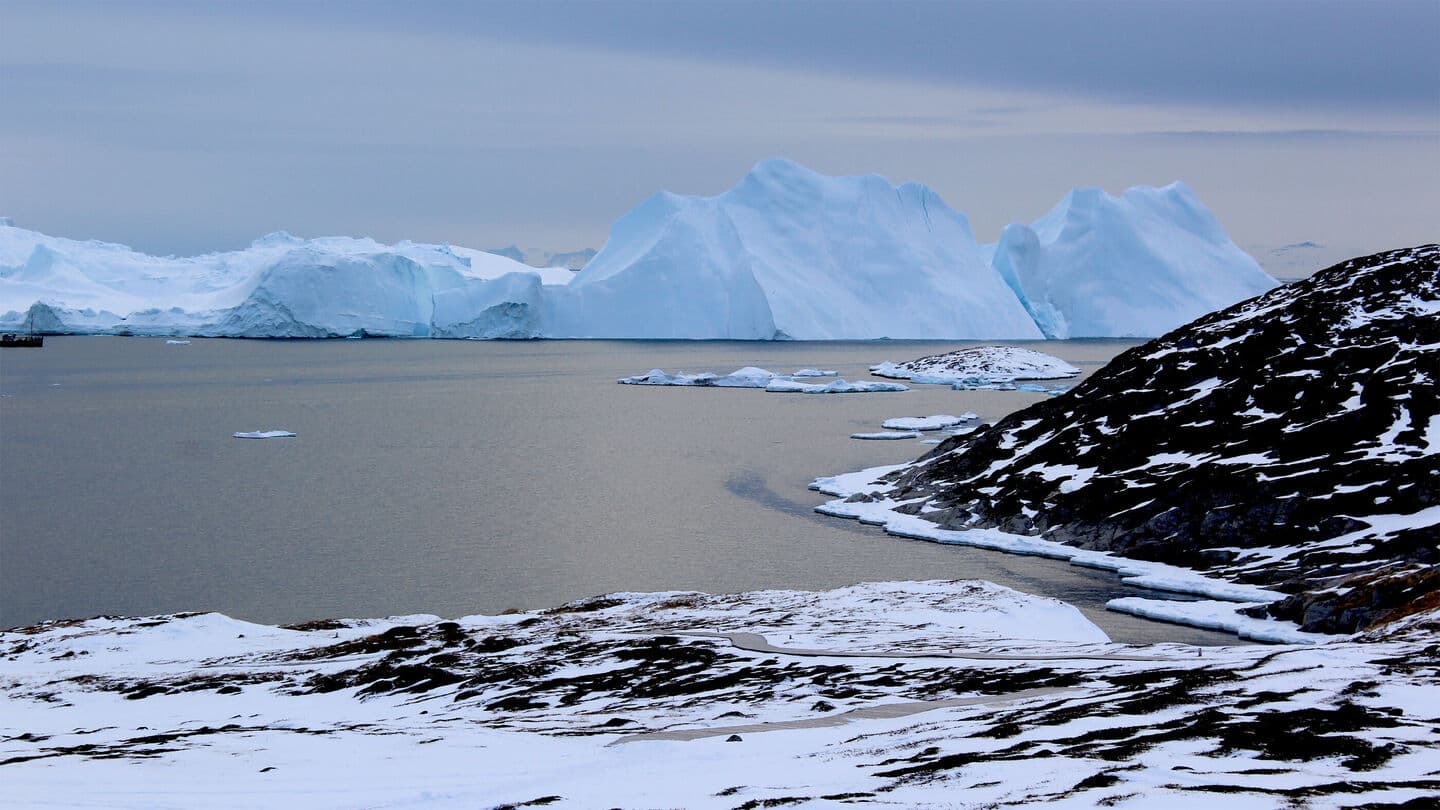
Greenland's ice melted 17 times faster during May heatwave: Scientists
What's the story
Greenland's ice sheet witnessed an alarming rate of melting during a heatwave in May, with the melt being 17 times faster than the average for the month, a report by World Weather Attribution (WWA) revealed on Wednesday. The unprecedented event also affected Iceland, where record-high temperatures were measured. The Arctic region is especially vulnerable to global warming, heating up four times faster than the rest of the planet since 1979, according to a 2022 study in the scientific journal Nature.
Impact
About the report's findings
The report focused on the seven hottest days in Iceland and the hottest day in eastern Greenland. The Ittoqqortoormiit station in eastern Greenland recorded a temperature of 14.3°C on May 19, which was 13 degrees higher than the average daily temperature for the month. In Iceland, Egilsstadir Airport registered a record-breaking temperature of 26.6°C, marking the highest-ever temperature for May in that region.
Climate change
Melting rate of Greenland ice sheet 'impossible' without climate change
One of the report's authors, Friederike Otto, a climate science associate professor at Imperial College London, said, "The melting rate of the Greenland ice sheet by, from a preliminary analysis, a factor of 17...means the Greenland ice sheet contribution to sea level rise is higher than it would have otherwise been without this heat wave." "Without climate change, this would have been impossible," she added.
Author's remarks
Heatwave affects whole world massively, says Otto
In eastern Greenland, the hottest day during the heatwave was around 3.9°C warmer than preindustrial climate averages. Otto said, "While a heatwave that is around 20 degrees Celsius might not sound like an extreme event from the experience of most people around the world, it is a really big deal for this part of the world." "It affects the whole world massively," she added.
Local impact
Indigenous communities in Greenland under threat
The warmer temperatures and melting ice pose a threat to Greenland's indigenous communities, affecting their ability to hunt on the ice. This not only threatens their livelihood but also their traditional way of life. The changes also impact infrastructure in both Greenland and Iceland, as roads and buildings built for cold weather can be damaged during heatwaves due to flooding from ice melt.